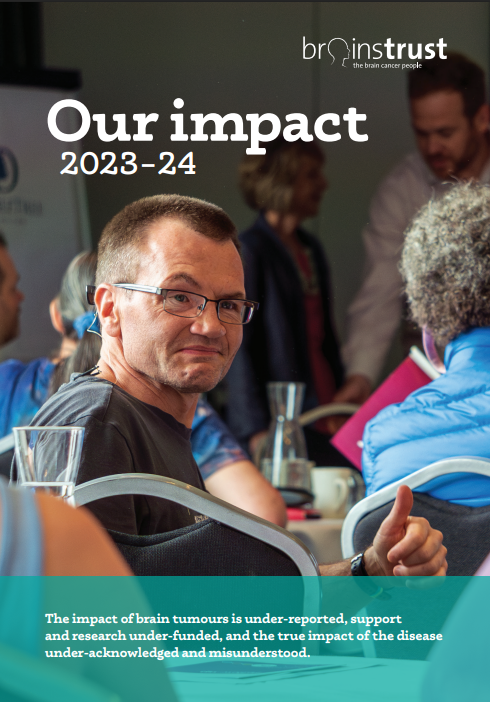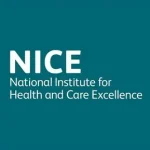Shared decision making
Today, NICE have released the latest guidance around shared decision making. Here, Dr Helen Bulbeck explains what this means when it comes to your care.
Making empowered decisions about your care
Communication is central to human interaction, to everything we do. Without it, we cannot relate to those around us, make our needs and concerns known or make sense of what is happening to us.

A cancer diagnosis, whether it is a new diagnosis or a recurrence, is frightening. A common theme is the sense of isolation, a lack of voice and the disempowerment that you feel. You aren’t sure to whom to turn, when, and for what, and there is a general feeling of loss of control. You don’t know what support is available, where to seek help, or what questions you should ask. A shift to being empowered begins at the point of diagnosis, with a collaborative and interactive relationship between you and your healthcare team; this empowers us to take responsibility for our condition with the appropriate clinical support. This is called shared decision making (SDM).
There remain major challenges to this change, for example, from moving from the position of seeing the healthcare professional just as an expert giving advice, to seeing them as an enabler who supports us to achieve our goals. There is also the challenge for us to move from seeing ourselves as passive recipients of care, to becoming activated and taking responsibility for our own contribution to improving our health and wellbeing outcomes and being empowered to do so.
What is shared decision making?
SDM ensures that we are supported to make decisions that are right for us. Only we know what our context is, what our appetite for risk is and what our values are. We are the expert on us, and the clinician is the expert on treatment options, if the options are appropriate. SDM is a collaborative process through which a clinician supports us to reach a decision about treatment, which could be no treatment. We know too that shared decision making and weighing up pros and cons of whether to treat, or not to treat, helps people to reframe problems, generate insights, shift dynamics, and change practice. Using shared decision-making allows everyone to become copilots in their care, so that we see a new model of maintenance of wellness as well as treatment of illness.
The SDM conversation brings together:
- the clinician’s expertise, such as treatment options, evidence, risks and benefits
- what we know best about our preferences, personal circumstances, goals, values and beliefs.
Why is SDM important?
Shared decision making is important because:
- It can create a new relationship between individuals and professionals based on partnership.
- People want to be more involved than they currently are in making decisions about their own health and healthcare.
- Both individuals and clinicians tend to consistently overestimate the benefits of treatments and underestimate the harms.
- It has the potential to enhance the way resources are allocated and reduce unwarranted clinical variation.
How does SDM happen?
SDM focuses on achieving specific, immediate goals that relate to precise challenges. For example, weighing up the pros and cons of having a particular treatment, overcoming a problem with caring, or coming to terms with entering the next stage of treatment. All of these are effective forms of self-management, and all rely on effective communication, which is in our DNA.
There are a variety of tools available that enable SDM. People can use decision aids when there is more than one option and neither is clearly better, or when options have benefits and harms that people value differently. Decision aids may be pamphlets, videos or web‐based tools. They state the decision, describe the options and help people think about the options from a personal view (e.g. how important are possible benefits and harms).
The two simplest and most accessible tools are outlined here:
The ‘Ask 3 Questions’ approach encourages us to ask 3 simple questions, which leads clinicians to provide higher quality information about options and their benefits and harms. The questions are:
- What are my options?
- What are the possible benefits and risks?
- How can we make a decision together that is right for me?
Decision aids (also called Option GridsTM)[1] are being developed across various cancers. These are simple grids, one side of A4, based on the most current evidence available and are focused on the questions patients most frequently ask when they need to make decisions based on their preferences. Clinicians can select 2 to 3 options to compare, and for select topics, fill in patient-specific data to customise the grid.
There is a 6 step process that is then followed:
- Describe: the patient is informed that the goal of using the grid is to initiate a conversation about options, that it is organised as a table to enable comparison, and that it uses questions that other patients have found useful.
- Check: patients are asked if they wish to read it themselves or whether they prefer the comparisons to be read aloud.
- Handover: the patient is given the grid so that they can mark their copy and jot questions if they wish.
- Create space: if they wish to read the grid themselves, patients are asked if they mind if the clinician does other things during this time, so the patient does not feel ‘observed’ as they take time to assimilate the information.
- Ask: the patient is encouraged to ask questions and discuss.
- Gift: patients are told they should take the grid with them as an aid to memoryand an opportunity to discuss their options with others, as well as to look for more information.
Sources
Bulbeck, H. (2015). Quality of life: what the brain cancer community needs. Cowes: brainstrust.
The Health Foundation. (2016). Shared decision making. [online] Available at: http://personcentredcare.health.org.uk/shared-decision-making [Accessed 3 Sep. 2018].
The Health Foundation. (2012). A simple tool to facilitate shared decisions. [online] Available at: https://www.health.org.uk/newsletter/simple-tool-facilitate-shared-decisions [Accessed 3 Sep. 2018].
NHS England. (2018). Shared decision making. [online] Available at: https://www.england.nhs.uk/shared-decision-making/ [Accessed 3 Sep. 2018].
Seal, R.P., Kynaston, J., Elwyn, G. and Smith, P.E.M. (2013). Using an Option Grid in shared decision making. Practical Neurology, 14(1), pp.54–56.
Stacey, D., Légaré, F., Lewis, K., Barry, M.J., Bennett, C.L., Eden, K.B., Holmes‐Rovner, M., Llewellyn‐Thomas, H., Lyddiatt, A., Thomson, R., Trevena, L. (2017). Decision aids for people facing health treatment or screening decisions. Cochrane Database of Systematic Reviews, 4(1).
[1] Seal, R.P., Kynaston, J., Elwyn, G. and Smith, P.E.M. (2013). Using an Option Grid in shared decision making. Practical Neurology, 14(1), pp.54–56.









